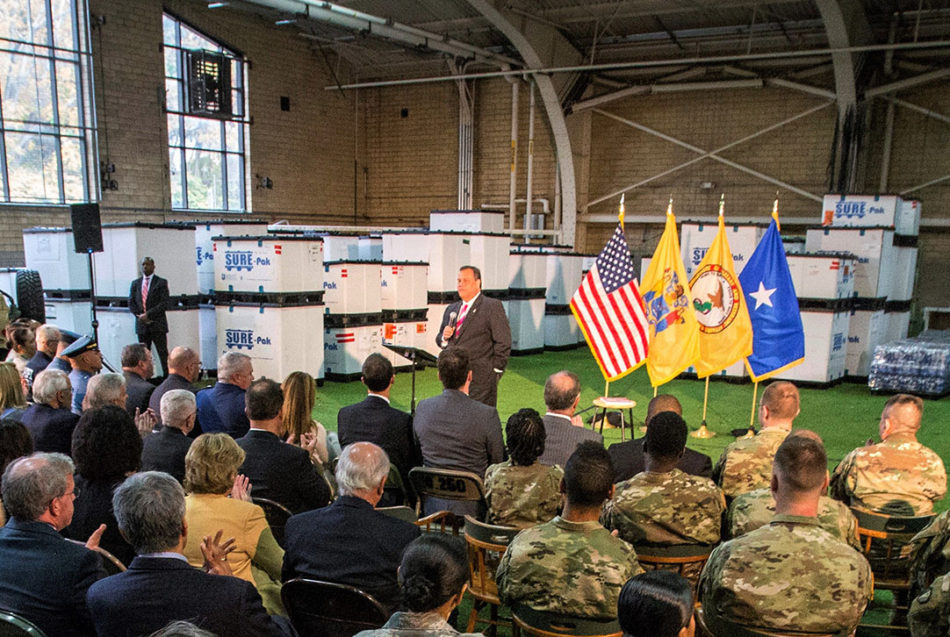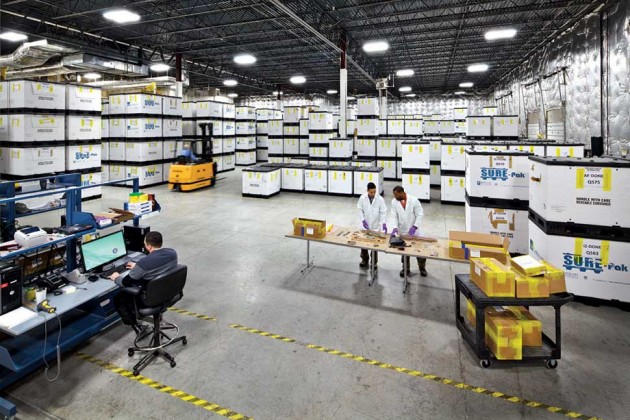Just outside the nation’s capital, amid suburban trappings like yogurt shops and yoga studios, chain sports bars and fast food franchises, sits a nondescript building few could guess contains the legacy of two wars terrorists fought with hidden bombs.
It’s the FBI’s repository of pain.
Inside the brightly-lit and highly secure warehouse that evokes “Raiders of The Lost Ark”, the Bureau has neatly stockpiled a “bomb library” of 100,000 remnants of improvised explosive devices, called IEDs, recovered by the U.S. military from battlegrounds mostly in Iraq and Afghanistan.
They’ve been collected to examine as evidence and intelligence on IED makers, and also to study in order to design technology to defeat them and keep G.I.s alive.
Inside huge white cardboard boxes stacked up to the three-story ceiling are the bits and pieces, the ball bearings and shrapnel, the wires and circuit boards, the melted cell phones and cordless base stations that made weapons responsible for killing hundreds, if not more than a thousand, U.S. troops who deployed in Operation Enduring Freedom, Operation Iraqi Freedom and Operation New Dawn after the 9/11 attacks.
“When you really stop to think of what’s in those boxes, it really makes you pause and think of all the troops wounded… by these devices, and it really is kind of sacred ground,” Gregory Carl, director of the Terrorist Explosive Device Analytical Center (TEDAC) at the FBI Lab, told ABC News this month.
ABC News was granted a rare visit inside a secret FBI facility few even know about, whose exact location cannot be disclosed for national security reasons, as part of an investigation into Iraqi bombmakers who had resettled in Kentucky as refugees.
“We’ve tried to stay under the radar,” said Carl, an FBI supervisory special agent. “Obviously we have to balance not informing our adversaries as to the type of work that we’re doing here at TEDAC.”
In Afghanistan, IEDs have killed 954 U.S. troops over the past twelve years of war. In Iraq, 2,207 Americans were killed by roadside bombs. Tens of thousands of others were wounded.
The warehouse was set up a decade ago as an archive for the weapons when the FBI teamed up with the military to try to study them and identify individual bombmakers, IED networks, IED emplacers and to help the Joint IED Defeat Organization develop intelligence and high-tech counter-measures for G.I.s to use in the warzones to avoid tripping hidden bombs.
Each IED collected — a practice not common until the later years of both wars — is prioritized by specialized military units in Afghanistan and formerly in Iraq. A code red item must be examined, photographed and checked for fingerprints or DNA within five days. Amber cases have to be processed in 30 days and green packages are considered low-priority.
An unexploded IED dug up south of Bayji, Iraq on Sept. 1, 2005 by U.S. soldiers in the 467th Engineers Battalion was labeled green when it arrived at TEDAC’s Quantico, Virginia intake center back then. But six years later, FBI forensic scientists responded to a plea from FBI agents in Kentucky to find IEDs from Bayji that might be linked to two Iraqi refugees being probed as possible former insurgents.
The ABC News investigation revealed that Waad Ramadan Alwan, 32, and Mohanad Shareef Hammadi, 26, were mistakenly allowed to resettle in Bowling Green, Kentucky, in 2009 because flawed background checks and intelligence on refugees failed to discover their past as al Qaeda-Iraq insurgents who ultimately admitted targeting American troops. Both Iraqis pleaded guilty to terrorism-related charges last year.
TEDAC officials examined thousands of IED parts and then matched latent prints on the Senao-brand cordless phone base station dug up in Bayji in 2005 with Alwan’s fingerprints.
“It was very exciting — exciting and also nervous, because we realized if we had one individual where we had fingerprints, there could be others,” Carl told ABC News.
Dan South is a former Pennsylvania National Guard trooper, who was the only soldier in a Humvee to survive an IED blast in Bayji, Iraq, in August 2005, which killed four of his fellow soldiers. He said he was shocked to learn that Alwan was linked by the FBI through latent fingerprints to an IED unearthed in the same area south of the town where his buddies had been killed and he was wounded only three weeks earlier.
Army Staff Sgt. Joshua Hedetniemi, who was in the same platoon as South, said that it was amazing to be able to “put a face to the enemy” that attacked his comrades in the dark.
Beyond Alwan’s bomb, the FBI archive contains about 40,000 IEDs each from Afghanistan and Iraq, plus another 20,000 shipped from countries such as Pakistan, Yemen and Somalia.
They are kept in simple cardboard boxes with labels that detail their contents. Each IED has its own computer case file, which states the location and date it was detonated or located, as well as whether there were any casualties.
The IED packages are neatly piled into 3,500 stacked “tri-wall” white boxes in the FBI warehouse that each stand about five feet tall.
Two years ago, as a direct result of the Kentucky al Qaeda-Iraq case, JIEDDO gave the FBI funding to stand up an around the clock fingerprint lab solely focused on processing the 50,000 unchecked IED submissions in the warehouse for fingerprints and to respond to dozens of current counter-terrorism cases where subjects are refugees with possible backgrounds as IED-makers.
About 800 IEDs are delivered each month to Quantico from Afghanistan and about 20 other countries, FBI officials said. TEDAC has placed 100 individuals on terror watchlists and identified more than 1,000 bombmakers, Carl said.
The weight of being caretakers of such effective weapons of war isn’t lost on those who maintain its horrific contents.
“We never really think about that because we’re so used to being detached and professional in order to do our work, but it’s true that there is a lot of heartache represented in that room,” said one FBI official who has worked there.



